| Vintage Pulp | Mar 3 2024 |

You're evil. I'm a little lazy. I think our relationship works because we accept each other's flaws.
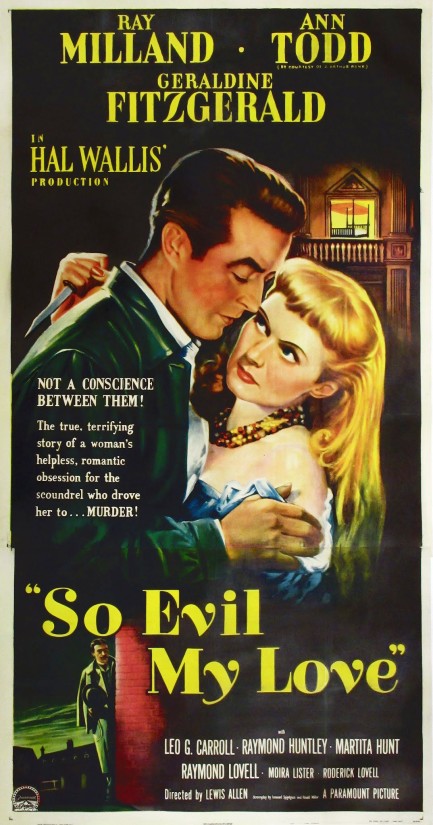
Looking at the promo poster for the Ray Milland/Ann Todd thriller So Evil My Love, we expected a standard 1940s crime drama, but we didn't look closely enough. The clothes reveal, if we'd used our eyes, that this is a period piece set in the late Victorian era. Milland plays a man sailing from Jamaica to England who picks up a case of malaria and is nursed back to health by recently widowed missionary Todd. Later, in Liverpool, he looks her up and moves into her boarding house. Milland is a painter, but he's more lucratively an art thief and forger. His real crime, and the reason he was leaving Jamaica, is a murder he committed. Trouble is soon to follow.
Once ensconced in Todd's rambling residence, Milland does the romantic full press, manipulating, flattering, and even dominating her until she falls in love with him. From that point it doesn't take much time or effort for Milland to draw poor, lonely Todd into his criminal schemes. Some viewers might become frustrated with her pliability and helplessness, but that's the 1890s for you. She eventually manages to act of her own volition, and her evolution into a woman who embraces power is what the movie is about. We thought it was good, for its type. It premiered in London today in 1948.
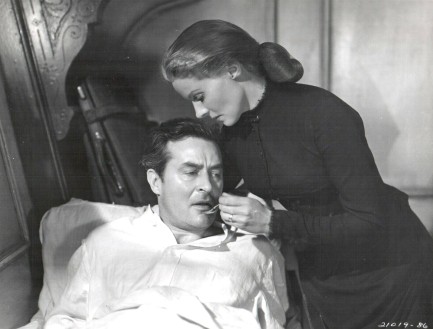
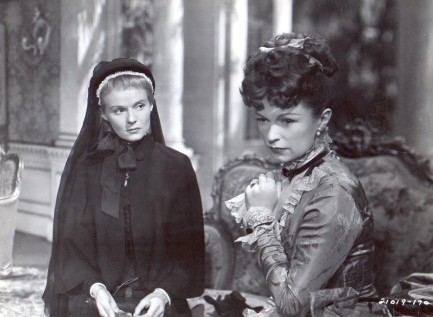
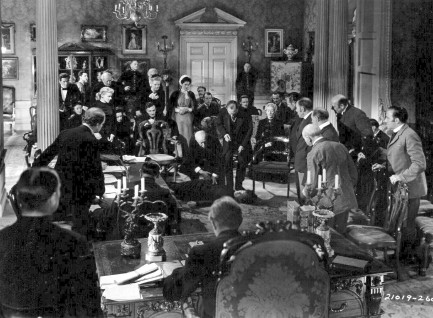

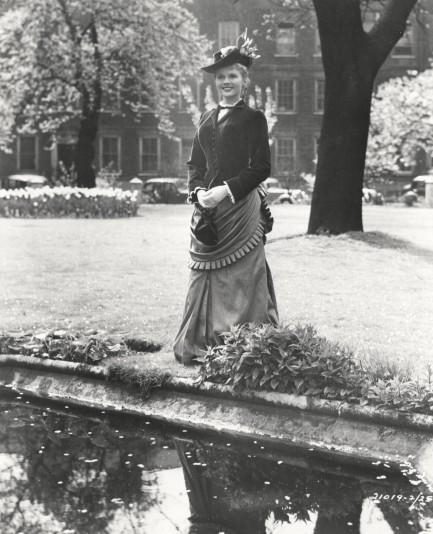
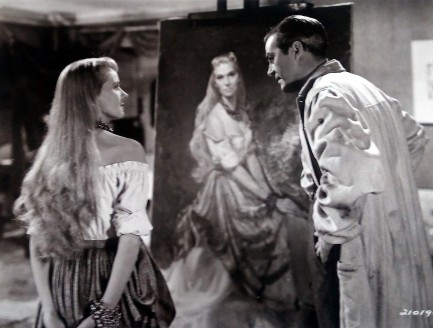
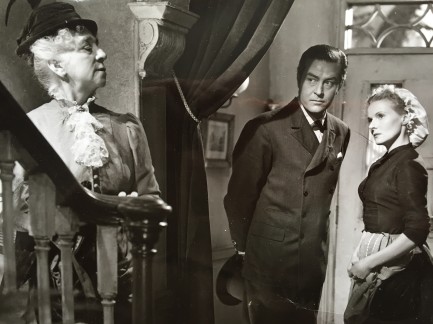
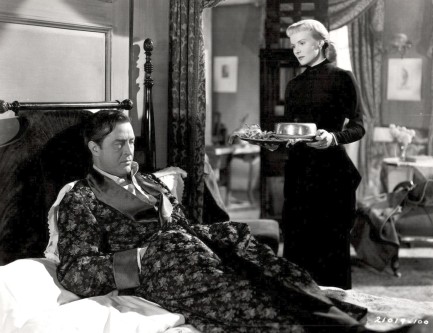
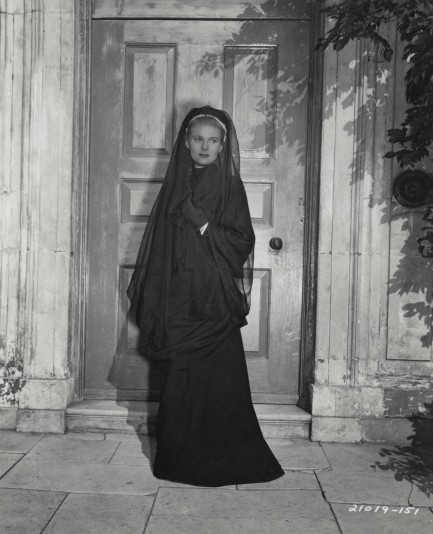
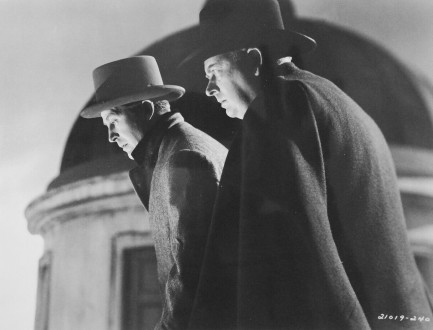
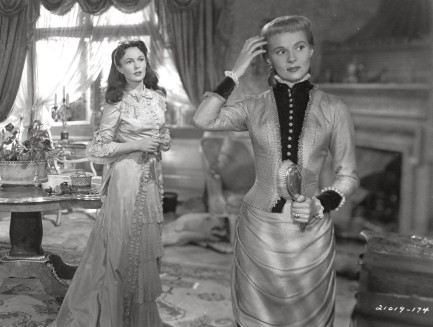
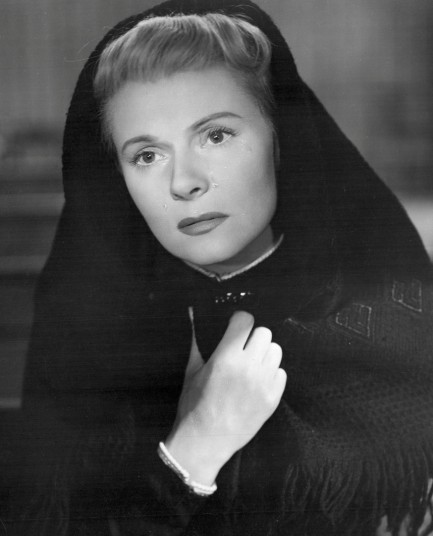












| Modern Pulp | May 21 2022 |

Something old, something new.
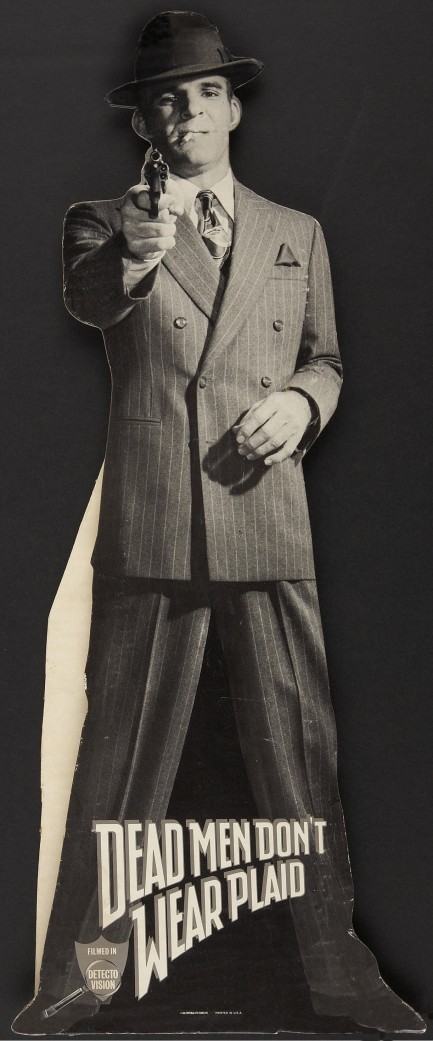
This is something a bit unusual. It's a life-sized promotional cardboard cut-out for 1982's film noir-sourced comedy Dead Men Don't Wear Plaid, which starred Steve Martin and Rachel Ward. We thought of this film recently due to Martin's new Agatha Christie-influenced television mystery series Only Murders in the Building, which we watched and enjoyed. We first saw Dead Men Don't Wear Plaid years ago, long before Pulp Intl. and all the knowledge we've gained about film noir. We liked it much better during our recent viewing.
If you haven't seen it, Martin uses scores of film noir clips to weave a mystery in which he stars as private detective Rigby Reardon. Aside from Ward, and director Rob Reiner, his co-stars are Ava Gardner, Humphrey Bogart, Burt Lancaster, Barbara Stanwyck, Ingrid Bergman, Lana Turner, Cary Grant, and many others, all arranged into a narrative that turns out to be about cheese, a Peruvian island, and a plot to bomb the United States.
The film's flow only barely holds together, which you'd have to expect when relying upon clips from nineteen old noirs to cobble together a plot, but as a noir tribute—as well as a satirical swipe at a couple of sexist cinematic tropes from the mid-century period—it's a masterpiece. If you love film noir, you pretty much have to watch it. Dead Men Don't Wear Plaid had its premiere at the USA Film Festival in early May, but was released nationally today in 1982.
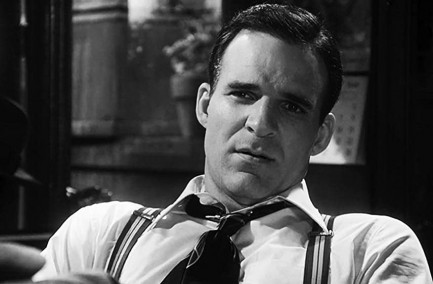
USA Film FestivalDead Men Don't Wear PlaidOnly Murders in the BuildingSteve MartinRachel WardRob ReinerAva GardnerHumphrey BogartBurt LancasterBarbara StanwyckIngrid BergmanCary GrantVincent PriceRay MillandEdmund O'BrienCharles LaughtonVeronica LakeAlan LaddKirk DouglasJames CagneyLana Turnerposter artcinemafilm noirmovie review
| Vintage Pulp | Apr 9 2022 |

He's going to fight to the last second of the last minute of the last hour.
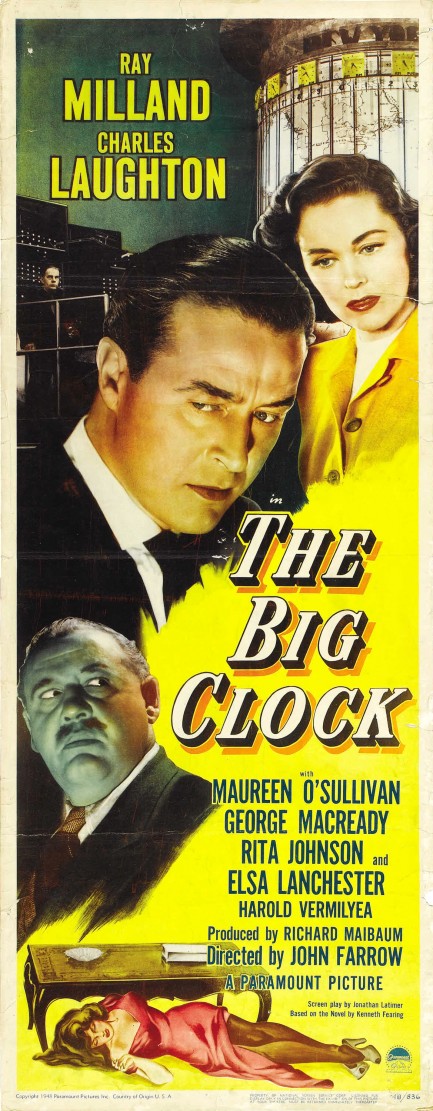
Above: an alternate promo poster for The Big Clock, a quirky film noir we looked at closely last year on this date. Quirky because it has comedy interwoven into the plot. But at its core the movie tells the dramatic tale of a man who's about to be blamed for a murder he didn't commit, but who has a desperate last chance to avoid his fate because he's also—in a classic noir twist—responsible for investigating the crime. It's definitely worth a watch. It premiered today in 1948.
| Vintage Pulp | Nov 19 2021 |

How do you spell murder in Italian? H-i-t-c-h-c-o-c-k.
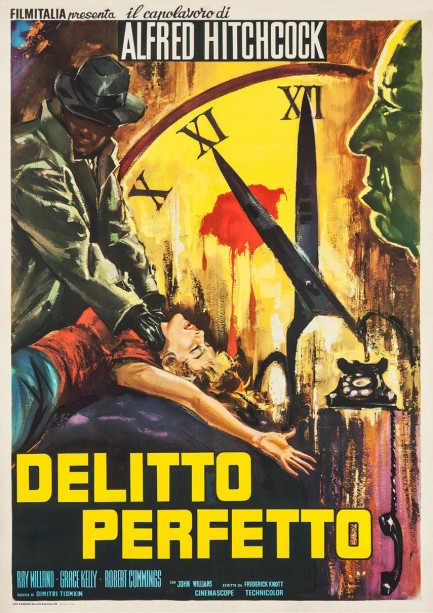
Above is a beautiful Italian poster for Delitto perfetto, better known as Alfred Hitchcock's Dial M for Murder, a movie we watch every five or seven years and always greatly enjoy. This semi-abstract effort isn't the only Italian poster for the film, but it's the best, in our view. We weren't able to find out who painted it, and considering it sold on a swanky auction site without that info, it seems as if nobody knows. Such good work uncredited, it's a shame. However, at this link you see another poster for the film, and that one is signed by Angelo Cesselon. Since both have a Hitchcock profile, and there's a stylistic similarity in other areas too, especially if you focus on the women's faces and the males' trench coats, we think it's possible Cesselon painted both pieces. The evidence wouldn't hold up in court, but it's good enough for us. Nice work, Angelo. Delitto perfetto premiered in Italy today in 1954.
| Vintage Pulp | Jun 15 2021 |

George Raft does the heavy lifting in 1935 crime thriller.
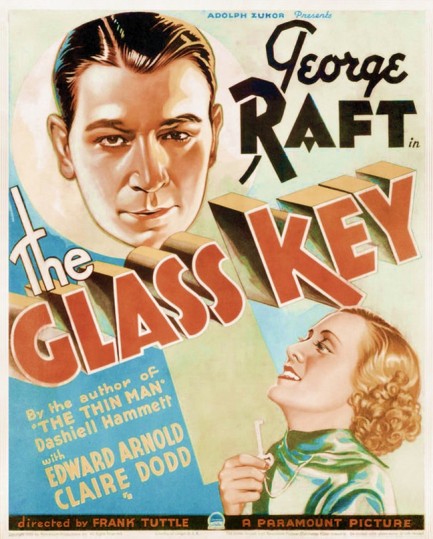
Is there any vintage movie star as overlooked these days as George Raft? The man was one of the top box office draws of the 1930s and had a string of hits through the 1940s and into the 1950s, including the 1959 smash Some Like It Hot. He was an ace stage dancer at the beginning of his career, but onscreen this natural athlete strikes many modern viewers as too dumpy for the tough guy roles he pioneered. Which makes it ironic that he was associated in real life with several gangsters, which led to him appearing in court, and in turn led to the public believing he was really living the thug life. Rather than hurting his popularity, the whiff of criminality made him more popular—something to keep in mind whenever some self-appointed sociologist slams kids for liking rappers.
Above you see a poster for one of Raft's biggest successes, the 1935 adaptation of Dashiell Hammett's novel The Glass Key. A 1942 version would also be a big hit for Alan Ladd and Veronica Lake, and the fact that it was rebooted just seven years after the original would seem to tell you plenty. But Raft's version isn't bad. We think it's simply a case of technical advances in the process of shooting films and the continuing popularity of Hammett making the property an attractive one to redo. Watching both movies back to back is a clinic in how quickly filmmaking advanced as the ’40s rolled around, particularly ideas around staging and editing action.
Even so, Raft made this earlier version of The Glass Key a hit by virtue of his star power, despite the fact that critics were not overly impressed with the film. No less a figure than Graham Greene said it was “unimaginatively gangster,” which is a curiously millennial turn-of-phrase. But Raft, playing the capable right hand man of a top underworld figure who's on the verge of open warfare with his enemies, doesn't deserve any of the blame. His hard boiled persona is the only reason this otherwise static film is worth watching. The Glass Key premiered in the U.S. today in 1935.
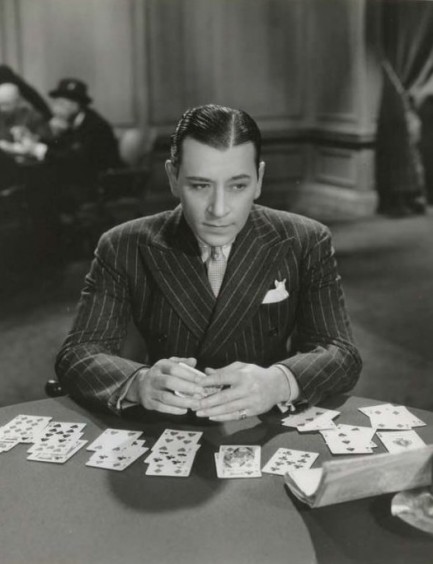
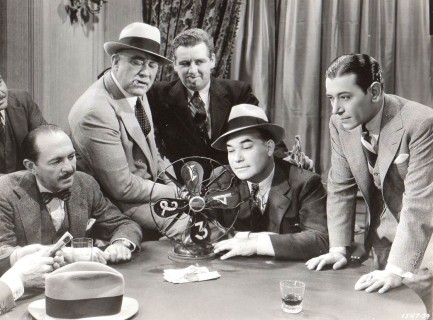
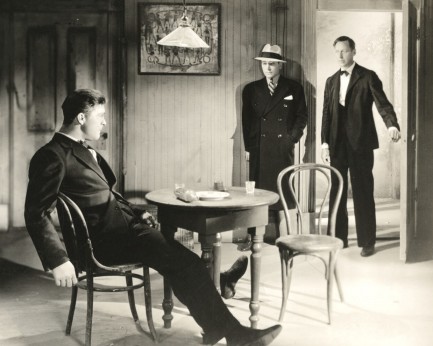
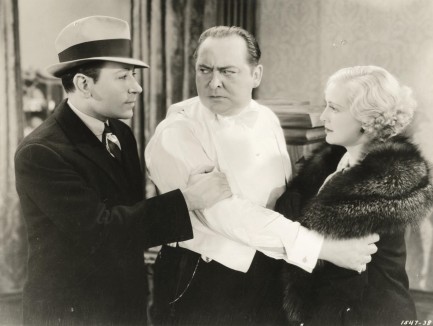
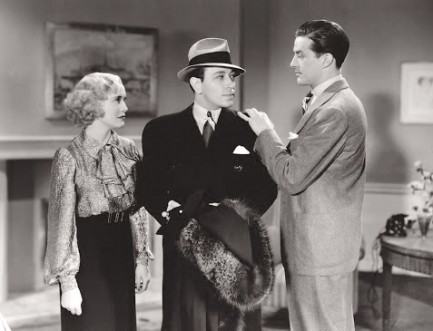
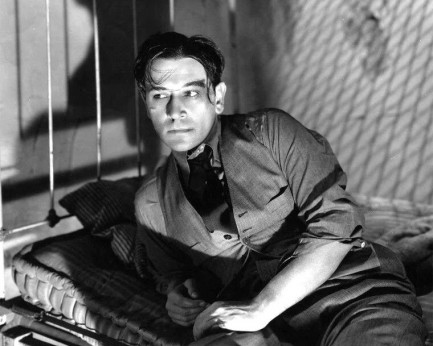
| Vintage Pulp | May 19 2021 |

In the Ministry of Fear they bake better than they spy.
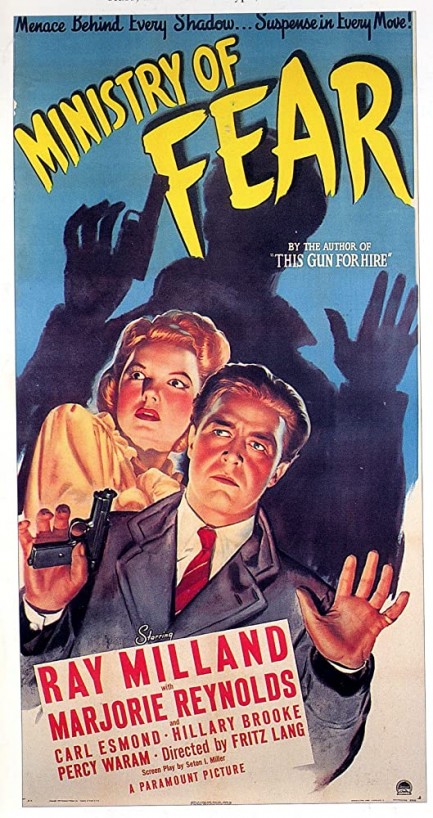
Fritz Lang was one of the most important directors of his era, both in his native Germany and in the U.S., and was a pioneer of the film noir form. Movies like Scarlet Street and especially The Big Heat are essential noir viewing. Ministry of Fear dates from a bit earlier and finds Lang saddled with what we consider to be a substandard script that through sheer artistry he makes into a watchable film. Ray Milland, Marjorie Reynolds, and Dan Duryea headline in a spy tale that revolves around Lang's favorite villains—the Nazis. Jewish and German, he left his homeland for Paris and beyond during the ascent of the Nazis during the 1930s, so the subject was personal for him, and was one he'd dealt with in previous films such as Cloak and Dagger and Hangmen Also Die.
In Ministry of Fear Milland plays a man who spends two years in a British asylum and is released at a time when World War II is raging and London is being bombed. He goes to a charity carnival and is enticed into guessing a cake's weight for a chance to win it, and because he's been given the correct answer by a fortuneteller, is victorious. But it's soon clear that the correct weight wasn't supposed to be given to him, and he isn't supposed to have won the cake. But he really wants it and resists attempts by the carny folks to take it back. He loses it during a train ride when a passenger beats the snot out of him for it, and at that point finally realizes the obvious—sweet though this confection may have been, it wasn't sought by various and sundry for its flavor, but because inside was something important. He wants answers, and he'll have to risk his neck to get them.
Generally with movies it's best to simply accept the premise, but there are limits. We were never clear on why it was necessary to put this important item in a cake. We understand subterfuge is involved in the spy game, but why not just hand the item over in an alley, or a pub bathroom, or a parked car? And if food must be involved, why a cake? Why not a haggis, or something else very few people want to just gobble up on the spot? A dried cod maybe. A blood sausage would have done. Plus they're easy to transport. You can just stick them in your pockets. And in a tight spot a whack across the nose with a blood sausage is far more effective than shoving cake in someone's mug. The cake gimmick was probably—strike that—certainly better explained in Graham Greene's source novel. We haven't read it but we're confident about that. It could have been Lang who screwed the pooch, but it was more likely Seton I. Miller. He was screenwriter as well as executive producer.
In any case Milland bumbles his way through a train trip, across a moor, in and out of a crazy séance, and into a maze of misdirection to the eventual revelation of what's inside the cake, but the whole time we kept thinking the movie should be called Ministry of Cut-Rate Spies. We don't mean to say it's a total loss. It isn't like the Eddie Izzard comedy routine, “Cake or Death.” You won't choose death over cake. But it's a pretty uninspiring flick. The old dramas that have survived have done so for a simple reason. Most of them are good. Ministry of Fear isn't bad. It's just meh. It's like a cake that fell—it's flat and dense, but teases you with how yummy it could have been. It premiered in England today in 1944.
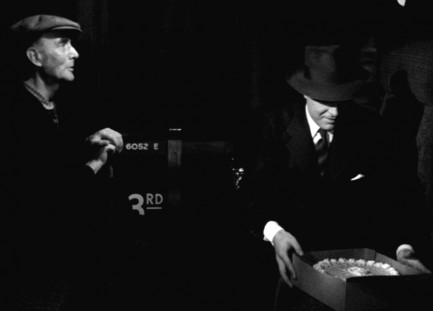
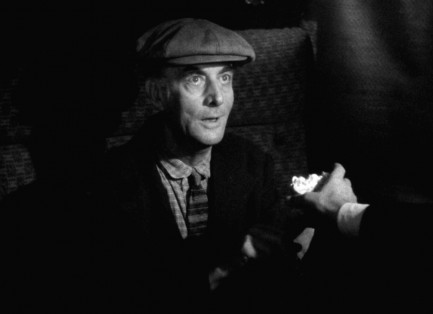 Here, have your cake. And eat it too. Heh.
Here, have your cake. And eat it too. Heh.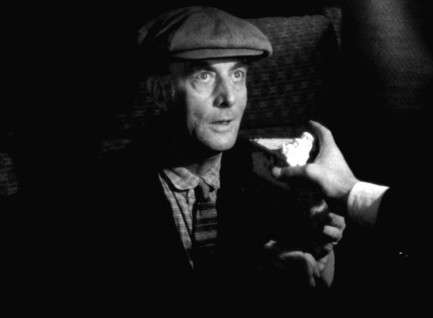 I prefer blood sausage for train trips, but I guess it's better for you I'm not shoving one of those in your face, eh?
I prefer blood sausage for train trips, but I guess it's better for you I'm not shoving one of those in your face, eh?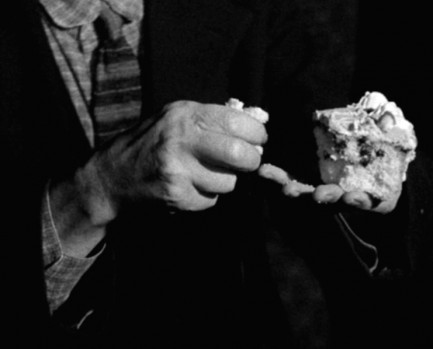
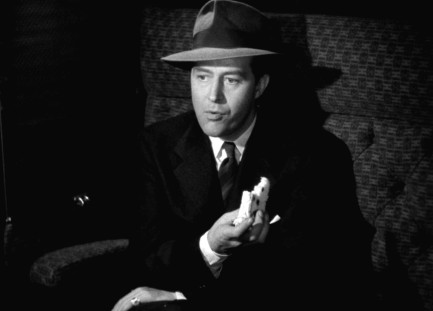 Wow, you sort of... crush the shit out of your cake before eating it.
Wow, you sort of... crush the shit out of your cake before eating it.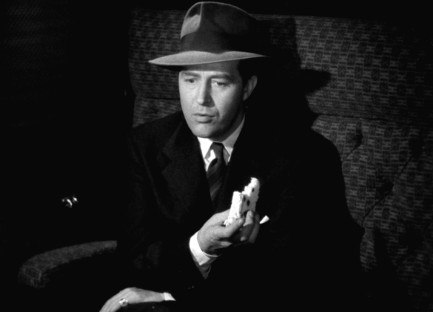 Have I been eating cake wrong the whole time I've been in England?
Have I been eating cake wrong the whole time I've been in England?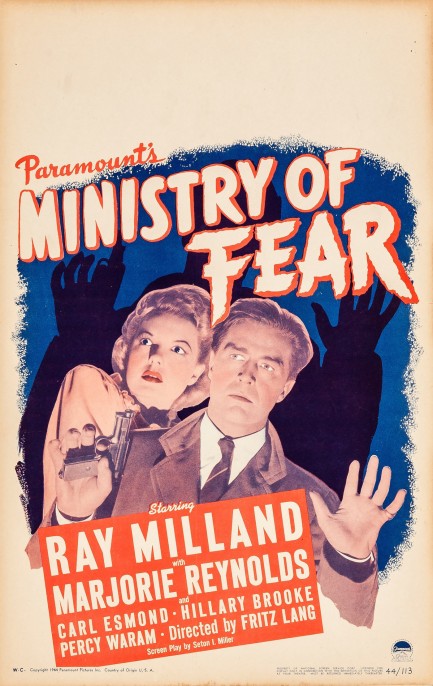
| Vintage Pulp | Apr 9 2021 |

Time keeps on ticking ticking ticking into the future.
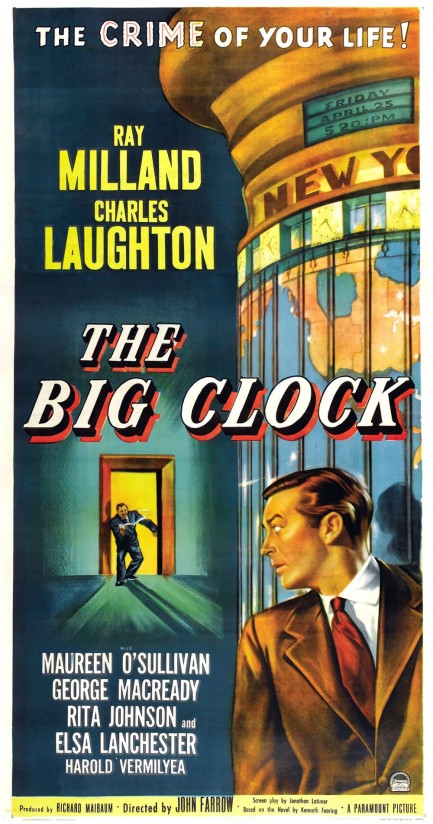
Above is a poster for the film noir The Big Clock, based on Kenneth Fearing's 1946 novel, with Ray Milland playing a journalist at fictional Crimeways magazine who finds himself entangled with the boss's girlfriend, then in murder when she turns up dead. He had nothing to do with it, but had been seen all over Manhattan with her the night of her death, and is presumed to be the killer though nobody has identified him yet. In classic film noir fashion, Milland's boss sets him to solving the case. But how can he, when he's actually looking for himself? And how can he throw his numerous staffers off the scent while appearing to conduct a legit investigation, yet somehow find the real killer? It's quite a mess.
For casual movie fans, distinguishing film noir from vintage drama can be difficult, but of its many defining characteristics, flag this one: the man who finds himself in a vise that slowly tightens due to what had seemed at first to be inconsequential or random acts. A painting Milland bought in an art shop becomes a potential piece of evidence against him. The cheap sundial he acquired in a bar does the same. The random man he exchanged a few words with becomes a potential witness. And so on. He's the subject of a puzzle that has his face in the center. Other characters are slowly assembling pieces from the edges inward. If Milland doesn't outwit them before they find the piece with his face on it, he's screwed.
In addition to an involving plot, nice technical values, Ray Milland, and a large clock, The Big Clock brings the legendary Charles Laughton to the party, along with Maureen O'Sullivan, a decade removed from her ingenue period playing Jane in Johnny Weissmuller's Tarzan movies, all grown up here as the smart, loyal, beautiful wife willing to come to Milland's aid when the chips are down. The film is unique, as well, for its interwoven comedy, unusual in films from this genre. These moments come often, and may seem obtrusive to some, but we thought they fit fine. And that's a good way to sum up The Big Clock. If you're a film noir fan, it'll fit you just fine. It premiered in the U.S. today in 1948.
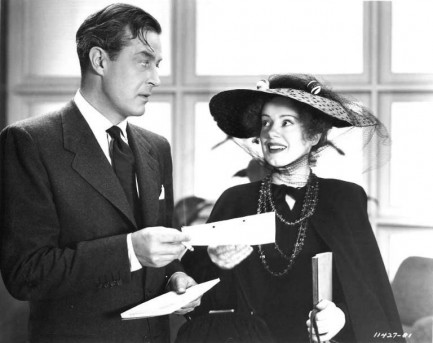
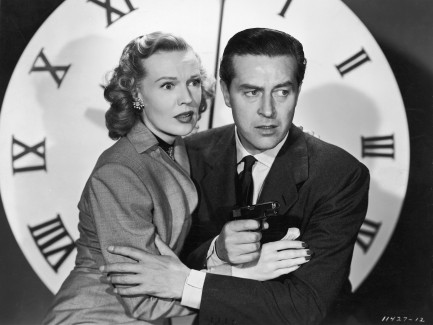
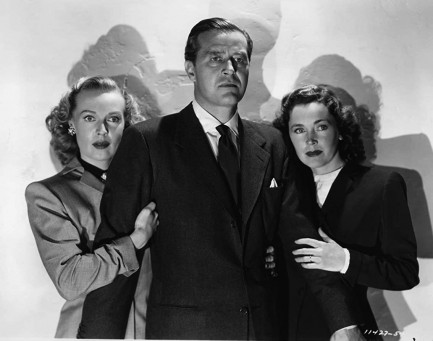
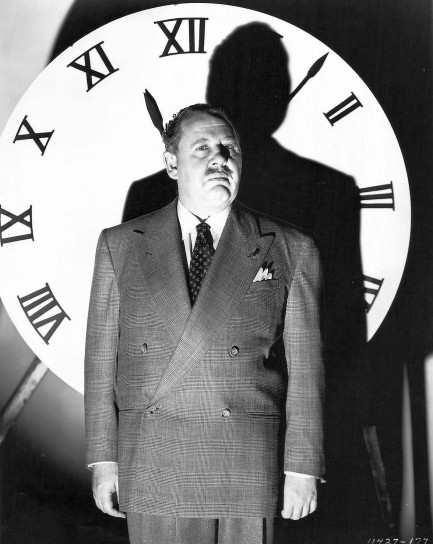
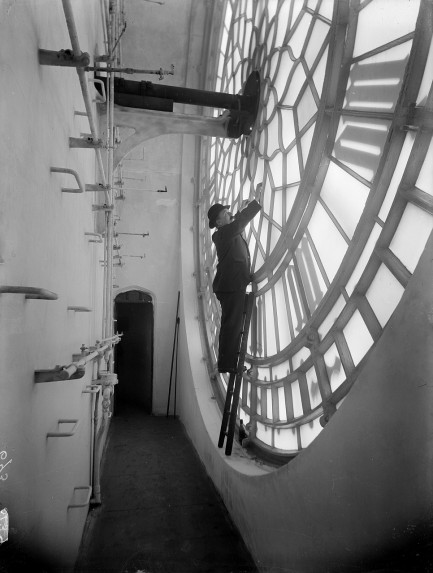
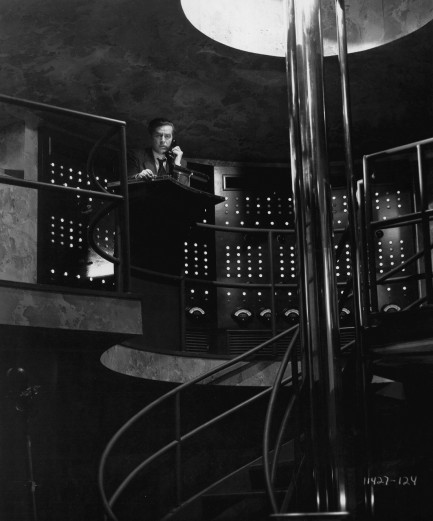
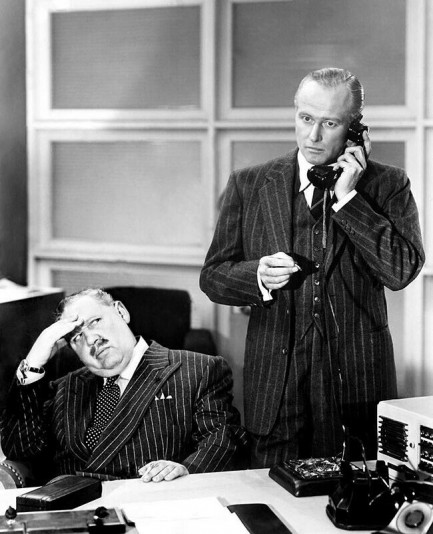
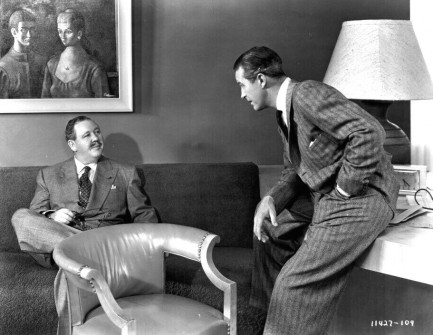








| Vintage Pulp | Jul 19 2019 |

Ray Milland and Rosie Grier put their heads together.
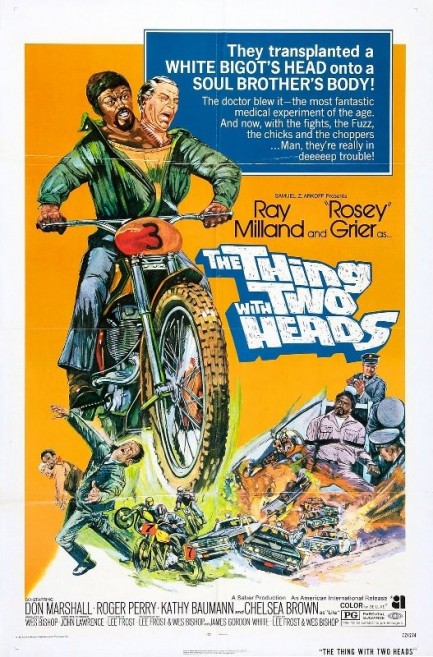
Is it fair to describe The Thing with Two Heads as a legendary movie? We think so. It's The Wild Ones taken to its shark jumping extreme thanks to the blaxploitation maestros at American International Pictures. Instead of a white convict and a black convict handcuffed together after a prison escape, this flick features a racist white doctor whose head is grafted onto a black patient's body. These two really hate each other, which is a serious problem considering they spend 24/7 at kissing distance, but they're stuck.
Ray Milland, who once won a Best Actor Oscar, is trying to prolong his own life. Rosey Grier is a convict on death row who donates his body to science. He has no idea what the science he's donated himself to entails, just that he'll avoid execution for thirty more days and buy time for his relatives and lawyer to prove his innocence. Sounds fun, right? Once Grier wakes up after surgery and realizes what's happened he flees with Milland's noggin riding helplessly along and decides to prove his innocence himself. But Milland is slowly gaining control of their body. You get the feeling this isn't going to end well.
The Thing with Two Heads is low budget, cheeseball, light on genuine humor, and perfunctory in its ending. And yet... how can one resist? Is it an ingenious parable about the historical theft of black bodies by white men? Or is it just a chunk of opportunistic schlock? Only the screenwriters know. We'll say this, though—considering how low this movie could have sunk (picture Milland looking down at Grier's dick and exclaiming, "Whoa! That's bigger than my Oscar!") it's actually pretty restrained. Put it in the better-with-alcohol category and don't watch it alone. It premiered in the U.S. today in 1972.
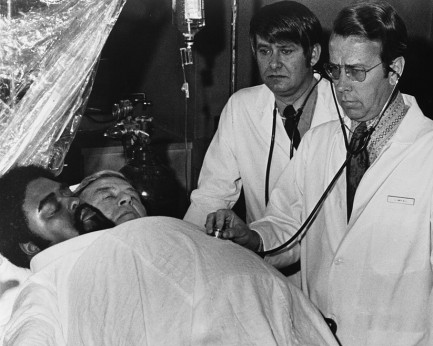
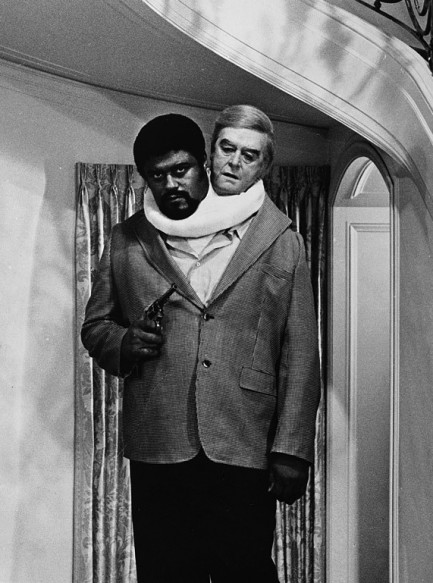
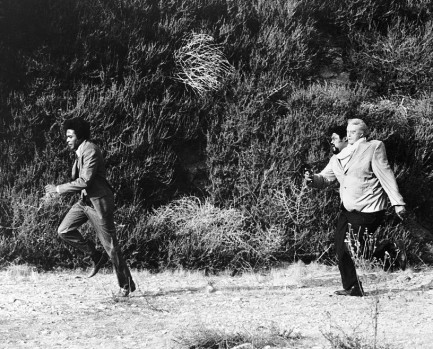
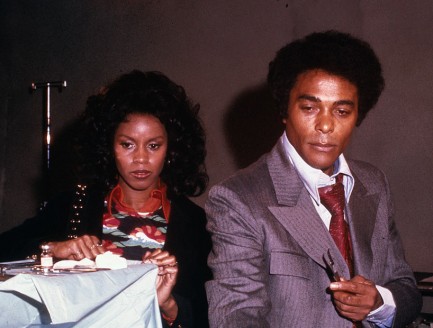
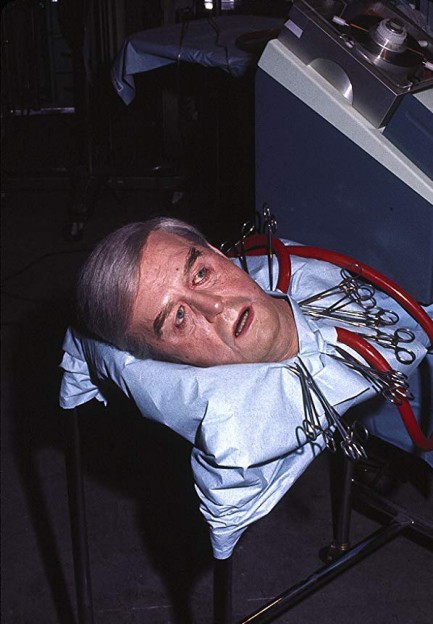
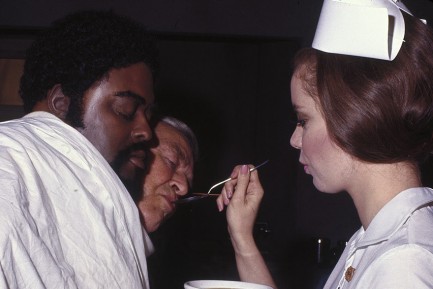
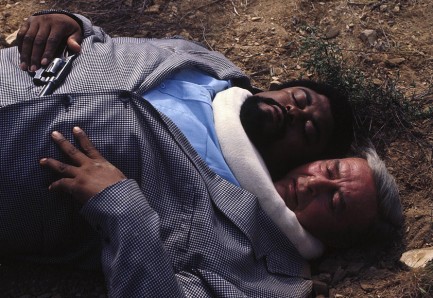

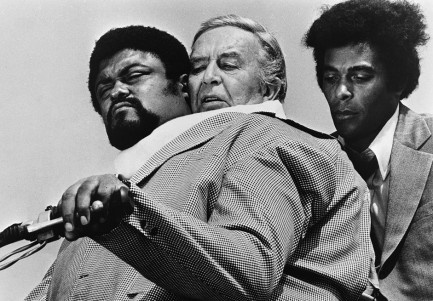
| Vintage Pulp | Nov 19 2018 |

Their issues have gone way past the point of counseling.
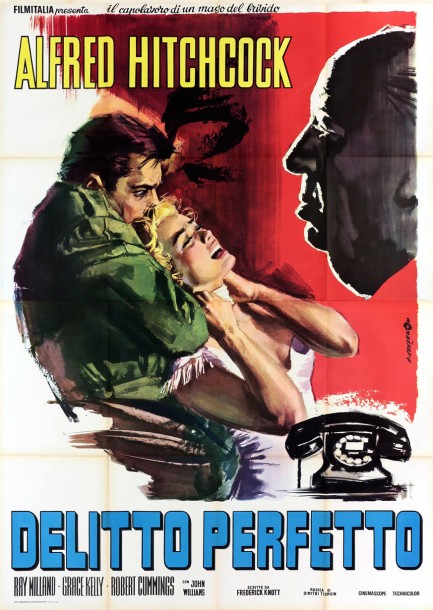
Dial M for Murder, which starred Grace Kelly and Ray Milland as spouses whose problems make other bad marriages look like a Sunday picnic, is a very entertaining movie. For its Italian release today in 1954 it was called Delitto perfetto. This violent but brilliant promo poster was painted by the genius illustrator Angelo Cesselon, who we've featured before. And Hitchcock, nothing less than an international phenomenon in his day, gets his profile into the mix. See Cesselon at his best here.
| Vintage Pulp | May 29 2018 |

Hello, is this the murder helpline? I'd like help killing my cheating ass wife.
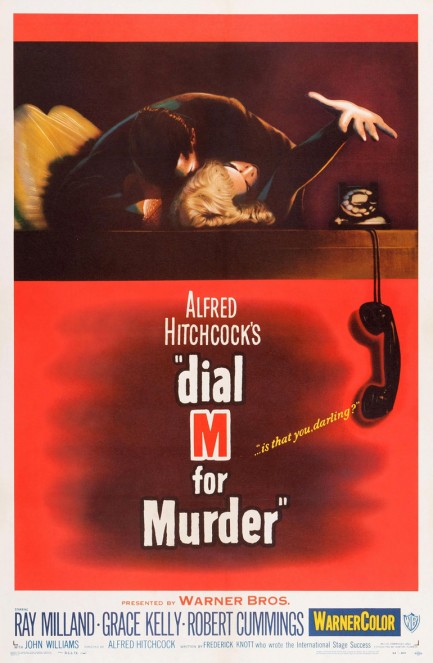
Most people who haven't seen the Alfred Hitchcock thriller Dial M for Murder jokingly ask, “How could anyone want to kill Grace Kelly?” Well, because she's cheating with another man. Not that infidelity justifies murder, but it certainly can be expected to provoke some sort of serious reaction. Probably Ray Milland, her husband, should have confronted her with the usual questions: “When did it start?” “Do you love him?” “Is his dick bigger than mine?” “Does he make you orgasm and if so how?”
But instead of being reasonable Milland decides his wife needs to be gone from the Earth, so he devises a foolproof murder plot. It goes wrong anyway and that's the fun of the movie—seeing how he cleverly improvises over and over only to have his scheme unravel anyway because of one tiny thing he neglects to consider. Dial M for Murder is another winner from Hitchcock, one you should see if you haven't. It went into general release in the U.S. today in 1954.
The famed poster for the movie was painted by Bill Gold, whose credits include everything from Casablanca to Unforgiven. Gold was active from 1941 to 2011, accumulating numerous awards along the way, and is now retired at age ninety-seven. If you want to learn more about him there's a website that discusses and showcases his seven decades of movie work which you can access at this link. It's well worth a visit.
But instead of being reasonable Milland decides his wife needs to be gone from the Earth, so he devises a foolproof murder plot. It goes wrong anyway and that's the fun of the movie—seeing how he cleverly improvises over and over only to have his scheme unravel anyway because of one tiny thing he neglects to consider. Dial M for Murder is another winner from Hitchcock, one you should see if you haven't. It went into general release in the U.S. today in 1954.
The famed poster for the movie was painted by Bill Gold, whose credits include everything from Casablanca to Unforgiven. Gold was active from 1941 to 2011, accumulating numerous awards along the way, and is now retired at age ninety-seven. If you want to learn more about him there's a website that discusses and showcases his seven decades of movie work which you can access at this link. It's well worth a visit.
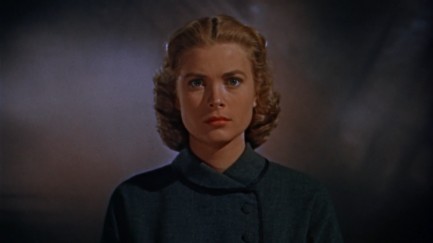 Could he really be trying to kill me?
Could he really be trying to kill me?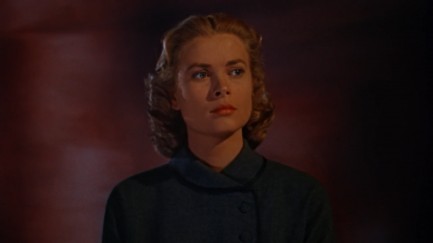 I guess it's possible, considering I cucked and humiliated him.
I guess it's possible, considering I cucked and humiliated him. 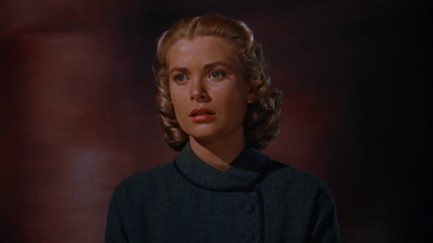 Maybe I shouldn't have told him I'm multi-orgasmic now.
Maybe I shouldn't have told him I'm multi-orgasmic now.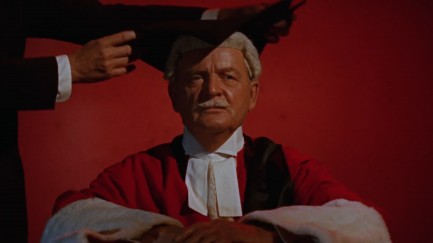 For the crime of murdering the male ego I sentence you to hang by the neck until dead, dead, dead.
For the crime of murdering the male ego I sentence you to hang by the neck until dead, dead, dead.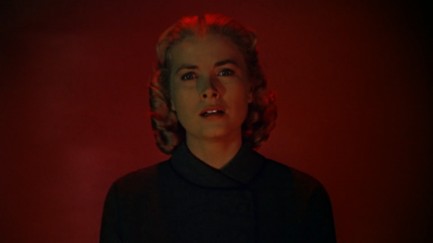 What? Seriously? But I've only gotten a third of the way through 101 Sex Positions.
What? Seriously? But I've only gotten a third of the way through 101 Sex Positions. 




































































